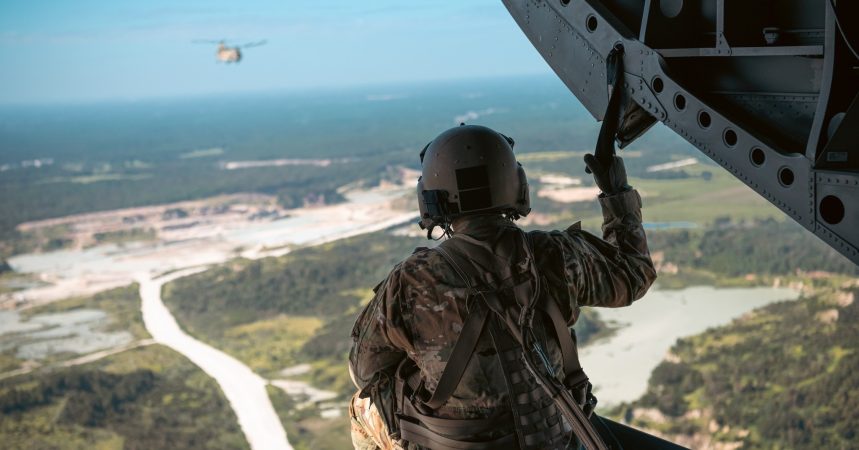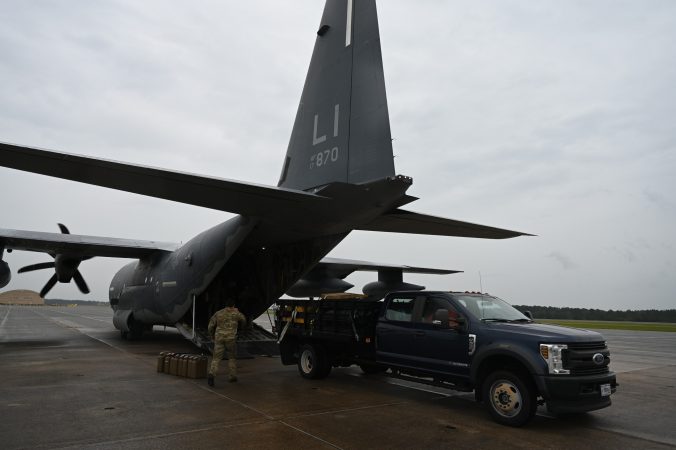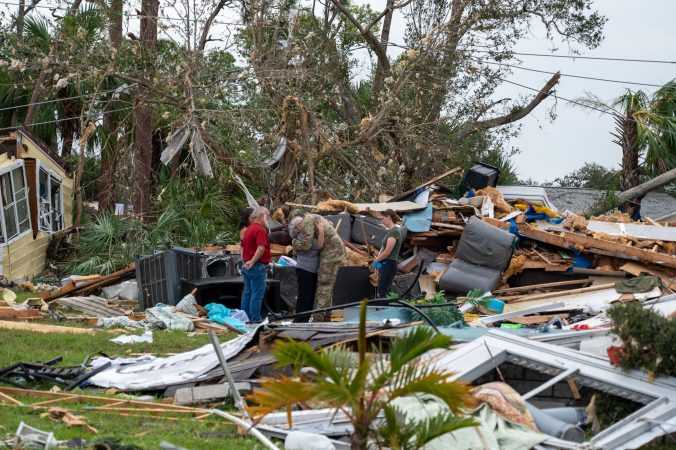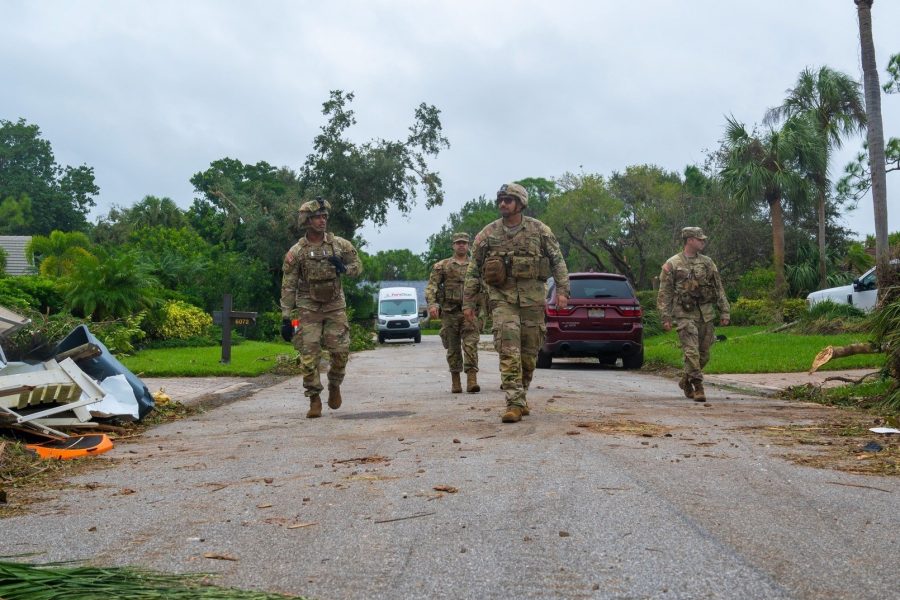Army National Guardsmen and Air National Guardsmen from as far as New York and Alaska deployed to the southeastern U.S. in recent days in response to Hurricane Helene and Hurricane Milton.
Milton made landfall Oct. 9, just two weeks after Helene, which made landfall on Sept. 26 and devastated western North Carolina. Soldiers with the Florida National Guard were surprised to find themselves helping with another state’s disaster relief.
“Florida typically receives the donor states to us, due to being the first impacted state,” Lt. Col. Brian Cooper, commander of the Florida Guard’s 1-111th General Support Aviation Battalion, said in an Oct. 13 press release. “This one was historic because of the size and nature of this hurricane, affecting numerous states at a great deal of speed. So, what we felt as an impact [in Florida] ultimately impacted those states as well.”
Florida troops traveled to North Carolina under the Emergency Management Assistance Compact, which lets National Guard units from different states help each other out. They hauled food and water, conducted search and rescue, and cleared roads of fallen trees and debris so that first responders could get through.
The Guardsmen from other states make a big difference when Guardsmen in the state being helped can’t mobilize because their own houses have been destroyed, the press release noted. But the Florida troops had to get back home fast to prepare for Milton as it rapidly grew stronger.

“We had to work very fast to get our Soldiers back home so they could pack up [for extended duty] and be here in Orlando by 6 p.m. on Sunday and integrate with the 856th by Monday morning,” 2nd Lt. Brandi Ruth, a quartermaster officer with the Florida National Guard, said in an Oct. 9 release. “The 356th’s Soldiers had about two or three days of downtime—at the most—after Helene, and not everybody got that downtime.”
Spc. Yetel Fugon, an automated logistics specialist with the Florida National Guard, voiced a similar experience.
“This activation is kind of crazy,” she said in the same release. “There are a lot more missions coming through than I’ve seen with [Hurricanes] Debby and Idalia. [Temporary flood control devices] are much needed and there were thousands of requests for tarps after people’s roofs were damaged during Helene.”
More than 3,000 Guardsmen from more than 20 states arrived to help distribute food and water, clear roads, and search and rescue, a separate release noted.
“Their help has been extremely beneficial,” Army Lt. Col Arthur Gaines, Florida Joint Force Headquarters Deputy Director of Military Support, said in the release. “The reason we sent out such a large call is because we were preparing for a Category 5 storm and fortunately for us it did not impact Florida to that scale.”
Originally the response included 50 Alaska National Guardsmen, but only 13 made the trip after the hurricane’s impact was less disastrous than anticipated, according to Alaska news station KTUU. Closer to Florida, the New York Air National Guard’s 105th Airlift Wing used one of its C-17 transport jets to fly 41 New York Army National Guard Soldiers and 10 Humvees to the Sunshine State to help with the recovery effort.
Also from New York Air National Guard were Pararescuemen from the 106th Rescue Wing, some of whom flew in on one of the wing’s HC-130 transport planes. Other aircraft included at least two UH-60 helicopters from Louisiana; one from Virginia, and a CH-47 helicopter from the Colorado National Guard.

In total, the joint resources sent to Florida included 31 UH-60, HH-60, CH-47 and UH-72 helicopters, over 570 high-water vehicles, 13 boats, thousands of troops, and dozens of trucks, according to one release.
“The FLNG has been graced with an incredible show of support across Guard Nation, and we are truly grateful for the willingness, responsiveness and flexibility displayed by our partner states,” the Florida National Guard said in a statement.
In total, about 9,000 Guardsmen from 20 states including Florida responded, according to Maj. Gen. John D. Haas, Adjutant General of Florida. Together, they rescued 330 people and 39 animals; cleared 2,316 miles of road and 5,989 cubic yards of debris; provided 796,248 meals ready to eat; 992,124 boxes of water; 54,000 tarps; and 38,377 bags of ice.
It’s been a busy few months for the Florida Guard, who also responded to Hurricane Debby in August and took part in a major training exercise right before that.
“We’re tired. I’m not going to lie,” Col. Blake Heidelberg, director of military support, Florida National Guard, said in an Oct. 12 release. “We’re worn down and we’d like a break.”
But the work continues in Florida, North Carolina, Georgia, Tennessee, and southwestern Florida, where more than 11,000 National Guard Soldiers and Airmen were still conducting Milton and Helene relief missions as of Oct. 13. Guardsmen are delivering food, water, and generators, as well as hay for livestock, and helping locate the remains of storm victims.
More than 755 people were rescued in North Carolina alone, 219 of whom were hoisted to hovering helicopters.
“We train for situations like this, but actually being out there, saving lives and removing people from dangerous conditions really hits home,” Florida National Guardsman 1st Sgt. Pedro Montero said in a release. “Our Soldiers are dedicated to helping the community, and there’s no greater honor than stepping in when people need us most. These aren’t just strangers we’re helping — these are our neighbors, our families.”

